Yanyan Huang
Free Lunch in Pathology Foundation Model: Task-specific Model Adaptation with Concept-Guided Feature Enhancement
Nov 15, 2024
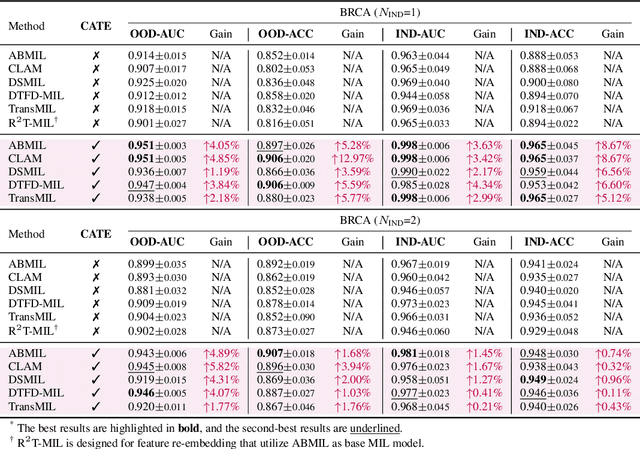
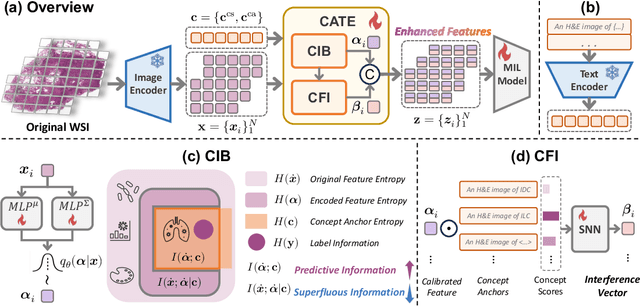
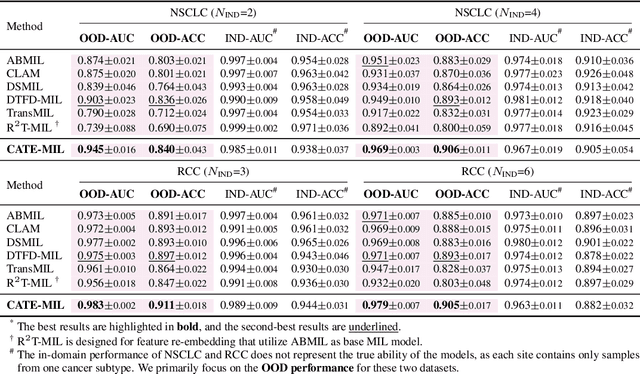
Abstract:Whole slide image (WSI) analysis is gaining prominence within the medical imaging field. Recent advances in pathology foundation models have shown the potential to extract powerful feature representations from WSIs for downstream tasks. However, these foundation models are usually designed for general-purpose pathology image analysis and may not be optimal for specific downstream tasks or cancer types. In this work, we present Concept Anchor-guided Task-specific Feature Enhancement (CATE), an adaptable paradigm that can boost the expressivity and discriminativeness of pathology foundation models for specific downstream tasks. Based on a set of task-specific concepts derived from the pathology vision-language model with expert-designed prompts, we introduce two interconnected modules to dynamically calibrate the generic image features extracted by foundation models for certain tasks or cancer types. Specifically, we design a Concept-guided Information Bottleneck module to enhance task-relevant characteristics by maximizing the mutual information between image features and concept anchors while suppressing superfluous information. Moreover, a Concept-Feature Interference module is proposed to utilize the similarity between calibrated features and concept anchors to further generate discriminative task-specific features. The extensive experiments on public WSI datasets demonstrate that CATE significantly enhances the performance and generalizability of MIL models. Additionally, heatmap and umap visualization results also reveal the effectiveness and interpretability of CATE. The source code is available at https://github.com/HKU-MedAI/CATE.
ConSlide: Asynchronous Hierarchical Interaction Transformer with Breakup-Reorganize Rehearsal for Continual Whole Slide Image Analysis
Aug 25, 2023



Abstract:Whole slide image (WSI) analysis has become increasingly important in the medical imaging community, enabling automated and objective diagnosis, prognosis, and therapeutic-response prediction. However, in clinical practice, the ever-evolving environment hamper the utility of WSI analysis models. In this paper, we propose the FIRST continual learning framework for WSI analysis, named ConSlide, to tackle the challenges of enormous image size, utilization of hierarchical structure, and catastrophic forgetting by progressive model updating on multiple sequential datasets. Our framework contains three key components. The Hierarchical Interaction Transformer (HIT) is proposed to model and utilize the hierarchical structural knowledge of WSI. The Breakup-Reorganize (BuRo) rehearsal method is developed for WSI data replay with efficient region storing buffer and WSI reorganizing operation. The asynchronous updating mechanism is devised to encourage the network to learn generic and specific knowledge respectively during the replay stage, based on a nested cross-scale similarity learning (CSSL) module. We evaluated the proposed ConSlide on four public WSI datasets from TCGA projects. It performs best over other state-of-the-art methods with a fair WSI-based continual learning setting and achieves a better trade-off of the overall performance and forgetting on previous task
SFCNeXt: a simple fully convolutional network for effective brain age estimation with small sample size
May 30, 2023Abstract:Deep neural networks (DNN) have been designed to predict the chronological age of a healthy brain from T1-weighted magnetic resonance images (T1 MRIs), and the predicted brain age could serve as a valuable biomarker for the early detection of development-related or aging-related disorders. Recent DNN models for brain age estimations usually rely too much on large sample sizes and complex network structures for multi-stage feature refinement. However, in clinical application scenarios, researchers usually cannot obtain thousands or tens of thousands of MRIs in each data center for thorough training of these complex models. This paper proposes a simple fully convolutional network (SFCNeXt) for brain age estimation in small-sized cohorts with biased age distributions. The SFCNeXt consists of Single Pathway Encoded ConvNeXt (SPEC) and Hybrid Ranking Loss (HRL), aiming to estimate brain ages in a lightweight way with a sufficient exploration of MRI, age, and ranking features of each batch of subjects. Experimental results demonstrate the superiority and efficiency of our approach.
HDNet: Hierarchical Dynamic Network for Gait Recognition using Millimeter-Wave Radar
Nov 01, 2022



Abstract:Gait recognition is widely used in diversified practical applications. Currently, the most prevalent approach is to recognize human gait from RGB images, owing to the progress of computer vision technologies. Nevertheless, the perception capability of RGB cameras deteriorates in rough circumstances, and visual surveillance may cause privacy invasion. Due to the robustness and non-invasive feature of millimeter wave (mmWave) radar, radar-based gait recognition has attracted increasing attention in recent years. In this research, we propose a Hierarchical Dynamic Network (HDNet) for gait recognition using mmWave radar. In order to explore more dynamic information, we propose point flow as a novel point clouds descriptor. We also devise a dynamic frame sampling module to promote the efficiency of computation without deteriorating performance noticeably. To prove the superiority of our methods, we perform extensive experiments on two public mmWave radar-based gait recognition datasets, and the results demonstrate that our model is superior to existing state-of-the-art methods.
OTFPF: Optimal Transport-Based Feature Pyramid Fusion Network for Brain Age Estimation with 3D Overlapped ConvNeXt
May 11, 2022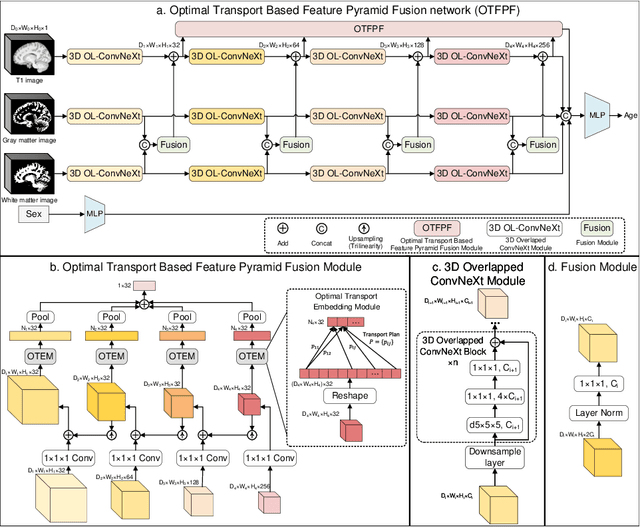
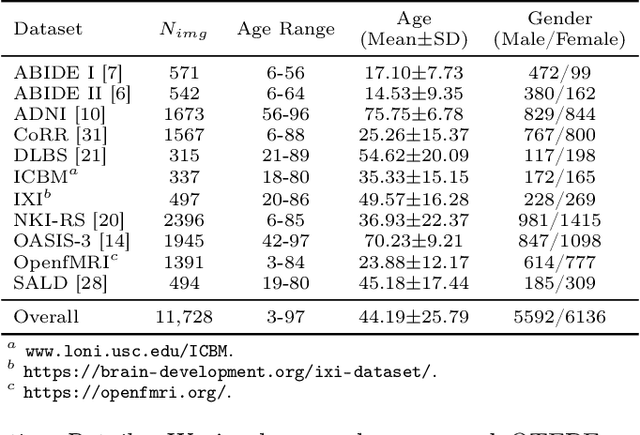
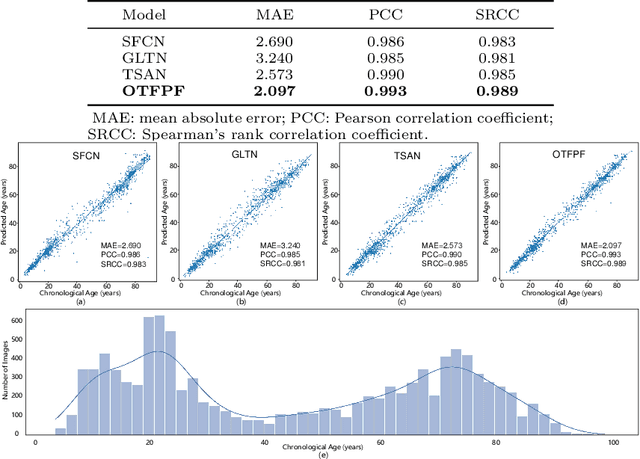
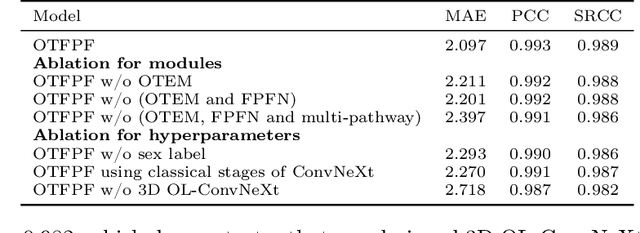
Abstract:Chronological age of healthy brain is able to be predicted using deep neural networks from T1-weighted magnetic resonance images (T1 MRIs), and the predicted brain age could serve as an effective biomarker for detecting aging-related diseases or disorders. In this paper, we propose an end-to-end neural network architecture, referred to as optimal transport based feature pyramid fusion (OTFPF) network, for the brain age estimation with T1 MRIs. The OTFPF consists of three types of modules: Optimal Transport based Feature Pyramid Fusion (OTFPF) module, 3D overlapped ConvNeXt (3D OL-ConvNeXt) module and fusion module. These modules strengthen the OTFPF network's understanding of each brain's semi-multimodal and multi-level feature pyramid information, and significantly improve its estimation performances. Comparing with recent state-of-the-art models, the proposed OTFPF converges faster and performs better. The experiments with 11,728 MRIs aged 3-97 years show that OTFPF network could provide accurate brain age estimation, yielding mean absolute error (MAE) of 2.097, Pearson's correlation coefficient (PCC) of 0.993 and Spearman's rank correlation coefficient (SRCC) of 0.989, between the estimated and chronological ages. Widespread quantitative experiments and ablation experiments demonstrate the superiority and rationality of OTFPF network. The codes and implement details will be released on GitHub: https://github.com/ZJU-Brain/OTFPF after final decision.
 Add to Chrome
Add to Chrome Add to Firefox
Add to Firefox Add to Edge
Add to Edge